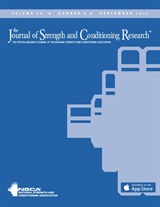 A study on the trendy and grueling workout regimen known as CrossFit has a correction concerning the number of participants hurt during 10 weeks of training. The paper has been the center of multiple lawsuits — one by CrossFit, and one by a CrossFit gym owner — for allegedly over-inflating the risks associated with the regimen.
A study on the trendy and grueling workout regimen known as CrossFit has a correction concerning the number of participants hurt during 10 weeks of training. The paper has been the center of multiple lawsuits — one by CrossFit, and one by a CrossFit gym owner — for allegedly over-inflating the risks associated with the regimen.
The original paper claimed that 9 of 54 participants dropped out of the study due to “overuse or injury.” The correction note says that just two left for those reasons.
The paper, published in The Journal of Strength and Conditioning Research actually concludes that CrossFit has some benefits. According to the abstract:
Our data show that [CrossFit-based high-intensity power training] significantly improves VO2max and body composition in subjects of both genders across all levels of fitness.
Here’s the erratum, which does not alter that conclusion:
In reference to Smith, MM, Sommer, AJ, Starkoff, BE, and Devor, ST. Crossfit-based high-intensity power training improves maximal aerobic fitness and body composition. J Strength Cond Res 27(11): 3159 – 3172, 2013, the authors have stated that the reasons for participants not completing follow-up testing, as reported in the article, were provided to the authors by the club owner. The club owner has denied that he provided this information.
After the article was published, 10 of the 11 participants who did not complete the study have provided their reasons for not finishing, with only 2 mentioning injury or health conditions that prevented them from completing follow-up testing.
In light of this information, injury rate should not be considered a factor in this study. This change does not affect the overall conclusion of the article.
The fitness club owner in question is Mitchell Potterf, of Columbus Ohio’s Fit Club. In a suit filed in February against last author Steven T Devor and The Ohio State University where Devor is a physiologist, Potterf alleges that the data were “fraudulent;” that Devor and OSU used the study, in part, to obtain nearly $300 million in grant money; and that they did so “with actual knowledge, deliberate ignorance or in reckless disregard that their research claims were false.”
They also, the suit alleges, “continue to allow the article to be published, without retraction, and to be circulated on a world-wide basis.” The paper has been cited 5 times, according to Thomson Scientific’s Web of Knowledge.
We learned of the correction from Potterf’s lawyer, Kenneth R. Donchatz, who sent it to us. It’s unclear if the correction is part of a lawsuit settlement.
We contacted paper author Devor, Potterf, and Donchatz. We will update this post if we hear back from them.
There were not two athletes who were injured. There were zero athletes that were injured. this is further false information on the part of OSU. [The participants who dropped out] all testified that they were not injured while performing any CrossFit activity. They have sworn testimony from these people.
The only two people who had any physical reason were one person who had a pre-existing disorder. The other guy was on his own doing an olympic lift and he hurt his back.
What’s next for the state court suit? Donchatz said:
We just filed a motion for partial summary judgement — a way of saying to the court that we have all these facts, and from the purview of the law we should win.
We’re saying you lied about Mitch’s gym, you defamed him, we want you to pay Mitch monetary damages.
There are lots of crossfit gyms in the whole wide world, the danger here is that people read the article and thought that Mitch had a risky gym, and moved to another gym. We do have data to support that, but we need to finish our calculations.
Like Retraction Watch? Consider making a tax-deductible contribution to support our growth. You can also follow us on Twitter, like us on Facebook, add us to your RSS reader, and sign up on our homepage for an email every time there’s a new post. Click here to review our Comments Policy.